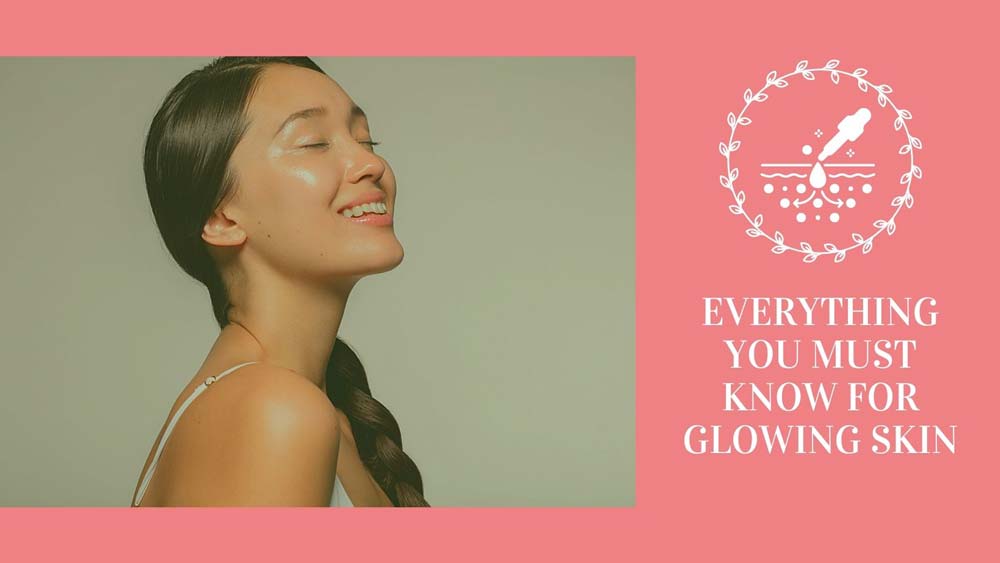
Niacinamide has been the most popular and trendy ingredient for all skin types. Teenage to mid-age everyone’s best option is niacinamide in their beauty regime as it treats acne, improves skin barrier function, reduces wrinkles, fine lines, hyperpigmentation and even increases skin luminosity and glossiness. It is outstanding for skin that produces more melanin which is the reason for having dark skin and hyperpigmentation. It’s awesome for those who have large pores.
All research about niacinamide has proved how important this ingredient is for almost all skin types. Its pH level is almost neutral and that’s why it is one of the most popular, trendy, and stable active ingredients in skincare. The most important thing is that you can use other active ingredients while you are using niacinamide.
This article will help to let you know about how to apply niacinamide with other active ingredients so that you meet fewer side effects with all possible FAQs. Don’t forget to get some pro tips at the bottom of the article and get so many unknown facts about niacinamide.
What is niacinamide
Niacinamide is the form of vitamin B3. Vitamin B3 is also known as niacin, niacinamide, nicotinamide. Niacin is made from foods that are taken. Basically, niacin is converted into niacinamide when your body produces too much of it than need. But in skin care products it can be found with two names niacinamide and nicotinamide.
Niacinamide is water-soluble which means it will not be dissolved in oil. It’s a perfect ingredient for those who hate oily ingredients or products. This active ingredient is absolutely non-acidic and non-irritating because of its neutral pH level.
It helps to reduce wrinkles, redness, fine lines, hyperpigmentation and minimize your pores also. It’s a trendy ingredient for having anti-aging properties in it. Niacinamide helps to stimulate collagen production that stops increasing the signs of aging. It can be found in many forms such as in serum, in moisture, in sunscreen, in toner, and finally in the form of a mask.

READ MORE: KLAIRS Freshly Juiced Vitamin C Serum Review
Benefits of Niacinamide for skin
Niacinamide is the most important for improving your skin barrier function and thus strengthens your skin elasticity which helps to minimize skin pores. How Niacinamide can do that?
Actually, our body naturally produces NADH and NADPH enzymes that play an important role to improve your skin which can be degraded with age. So niacinamide helps to reduce the degradation of these necessary enzymes. Besides, it helps to stop the signs of aging by fading wrinkles, fine lines, and healing sagging, droopiness and so many.
Moreover, it is also fruitful for reducing acne, acne scars, and hyperpigmentation. This one active ingredient can be your best friend as it solutes a lot of skin problems. But the most effective and important thing is that it is a very stable ingredient which means this active ingredient can combine with almost all ingredients with no side effects.
Niacinamide for acne scars and acne
Niacinamide has antimicrobial property that helps to kill or slow the spread of bacteria, viruses, and fungi on skin according to NIH. It also helps to reduce mild acne by controlling sebum production in the skin without irritation. It is absolutely good for those who have combination, sensitive, oily and acne-prone skin.
Improve skin barrier function
Niacinamide helps to reduce pigmentation or color by disrupting melanin production. Basically, Niacinamide balances the production of melanin produced in exposure to the sun. So when you go out without sun protection, your skin automatically produces more melanin to protect the skin.
The more your skin produces melanin the more chance to have hyperpigmentation, sunspot, dead cells and so many things. So niacinamide helps to reduce melanin production increasing the production of keratin (one kind of protein) and makes your outer layer thicker.

READ MORE: Drunk Elephant Lala Retro vs Protini Review, Comparison
Increase Brightening and reduce hyperpigmentation
Niacinamide has the outstanding power of removing hyperpigmentation by reducing the production of much melanin in your skin and increase the luminosity and plumping of the skin according to NIH. This ingredient is very much effective in evening out skin tone with fewer side effects than hydroquinone (also effective for increasing brightening).

Improves dryness and Anti-aging
Since niacinamide has the property to improve the skin barrier function, well skin barriers are able to produce proteins, ceramides, lipids other stratum corneum which are very much important for healthy and glowing skin according to research.
A good skin barrier protects the skin from free radical damage, bacteria, and TEWL (transepidermal water loss). Transepidermal water loss can make your skin wrinkled, fine-lined, dry, and dehydrate. By reducing trans-epidermal loss it helps to make your skin hydrated and plump.
Besides, Niacinamide stimulates collagen production and also slows the composition of glucose and proteins that lead to cross-linked collagen which plays an important role in cell signaling, tissue repairing, and tissue mechanics. Thus it increases skin elasticity and stops the signs of aging.
Helps to minimize pores
Producing excessive oil is the main reason for having clogged pores and increasing dead skin cells. If your pores remain clogged and have dead skin cells your pores will appear as big.
So Niacinamide helps to regulate excessive sebum or oil production according to research that leads to minimizes the skin pores and makes your skin texture smoother. Besides, the combination of niacinamide and salicylic acid can minimize the pores and it works significantly.
What makes your pores clogged and how to treat clogged pores.
Reduce rosacea and redness
Niacinamide has the power to improve your skin condition like rosacea and redness according to research. This blotchy redness can flame out and bring pustules and rosacea to your skin. Niacinamide mainly helps to reduce redness by improving the skin barrier. Since it nourishes by protecting your skin from any bacteria and impurities, it’s absolutely good for those who have rosacea, and sensitive skin.
Skincare Fridge: QUBI Professional Skincare Mini Fridge Review

You may also ask
What does niacinamide do for your face?
Niacinamide improves your skin barrier function which helps to produce proteins, ceramides, lipids other stratum corneum. The concoctions of these elements are very much important to protect you’re your skin from bacteria, redness, blotchiness, and irritation. Finally makes your skin hydrated by reducing trans-epidermal water loss.
Lets explore more: How to apply serum on face and what serum should you pick according to your skin condition.
What skin type is niacinamide good for?
Niacinamide is good for almost all skin types as its pH level is 4.5 that is almost close to your skin pH level. That means neither acidic nor alkaline it is. It is neutral, very gentle, and skin-friendly. Those who have acne, rosacea, oily and sensitive skin, can use it without any doubt because of its antimicrobial property.
Does niacinamide remove acne scars?
Yes, Niacinamide improves the skin barrier function that helps to protect your skin from bacteria, fungi, viruses, impurities by producing ceramides, and other stratum corneum. It also helps to regulate sebum production and kills bacteria and viruses since it has antimicrobial properties and removes acne and acne scars.
Is niacinamide good for aging skin?
Niacinamide is the trendy and most popular ingredient in the cosmeceutical industry for anti-aging. It creates new cells or tissue, ceramides, and proteins and so many in your skin lead to improve your skin barrier function which helps to remove wrinkle, fine lines, hydrate, and increase luminosity and glossiness.
How long does it take niacinamide to work?
Niacinamide takes almost 8-12 weeks to heal inflammation, melasma, rosacea, redness and finally improve your skin barrier function by stimulating collagen production.
Is 20 niacinamide too much?
20% of niacinamide is tolerable for skin but it’s not for each skin type especially for the new user. The new user should apply it from 2% and then gradually can increase the percentage level. Research proved that 2% of niacinamide is also helpful for the skin.
What fruits and vegetables are high in niacin?
Niacin is made from foods that are taken by your body. Basically, niacin is converted into niacinamide when your body produces too much of it than needs. Niacinamide can be found in fish, eggs, chickens, mushrooms, and green vegetables.
How to apply niacinamide and vitamin c together
The combination of niacinamide and vitamin c is absolutely tolerable for every skin type. Because the pH level of this combination is 3 to 7 which is almost similar to your skin pH level. If the pH level of any product or combination of products goes 8 -14 called alkaline, it can cause itching and irritating as it takes all sebum out from your skin. Another important thing is that you should maintain the order to apply this combination. Let’s check it up.
Cleansing: cleansing your face with any cleanser contains a pH level between 4.5 to 7.
Toner: apply toner with low pH like between 4 – 5. Don’t rub it, just tap it gently.
Apply serum or Vitamin c: now you can apply vitamin C all over your face. Just take 2 to 3 drops of vitamin c on your fingertips and then apply.
Apply Niacinamide: finally, you can apply niacinamide 2 to 3 three drops. If the vitamin c is a little bit thicker, you should wait for niacinamide after applying vitamin c or serum to be absorbed properly into your skin.
Moisturize your skin: Eventually apply moisturizer on the surface to lock niacinamide and to hydrate your skin, especially when you use a chemical exfoliant like and AHAs and BHAs. Get the best moisturizer that really works with niacinamide and shows no side effects.
You may also ask
When to use niacinamide and vitamin c
I recommend you to apply niacinamide (concentration level can be 4% – 10%) during day time and vitamin c during the night. This combination plays an important role to stimulate collagen production and exfoliate the upper layer which makes your skin less wrinkled, fine-lined, dark spots, and helps to increase luminosity, plump, and hydrate your skin. But if you go through this combination as a new user try concentration level at most 4% for the 1st week, then you can increase the concentration level up to 10% to 20% gradually. Don’t forget to moisturize your skin every day if you apply this combination.
Vitamin C Serum: Ole Henriksen Truth Serum Review (Expert Opinion)
Can I use niacinamide everyday?
Yes, you can. Niacinamide can be applied once with another active ingredient like vitamin c, hyaluronic acid, and salicylic acid. But the new user should use a low concentration level like 4%. Gradually you can increase the concentration level up to 10%.
Should I use niacinamide in the morning or night?
You should use niacinamide in the morning as it is a very powerful anti-oxidant. It helps to protect your skin from sun damage and free radical damage.
Can I apply niacinamide and hyaluronic acid together?
Yes, you can. Hyaluronic acid is a humectant that holds water or moisture in your skin while niacinamide improves the skin barrier and stimulates collagen production thus increase your skin elasticity. So the combination can help you get glowing, hydrating, and plumping skin.
How do you use niacinamide and hyaluronic acid?
Use hyaluronic acid at first as it is a humectant. It helps to hold moisture in your skin while niacinamide helps to improve the skin barrier, stimulate collagen production and regulate sebum production. You should use niacinamide after HA. And then must apply moisture to lock the ingredients. you may use them at a different time of the day.
Can I apply salicylic acid and niacinamide together?
You can apply salicylic acid and niacinamide together this can be the ideal partnership. “Niacinamide and salicylic acid paired together are ideal for people battling breakouts,” says Leung. Salicylic acid is the group of BHA (beta-hydroxy-acid) which is oil soluble helps to exfoliate the upper layer and decrease swelling and redness while niacinamide helps to repair cells, produce new tissue, proteins and thus improve your skin barrier.
How do you use niacinamide and retinol serum?
Apply niacinamide during daytime since it is an anti-oxidant type that protects skin from sun damage and free radical damage. And apply retinol during nighttime since it is an exfoliate type. It is better to apply an exfoliator-type product at night.
Can you use niacinamide with retinol?
Generally, Niacinamide can be used with any type of active ingredient like vitamin c, retinol, hyaluronic acid, and so many things. Retinol and niacinamide together can be the best combination. Niacinamide is an anti-oxidant type that helps to produce new skin cells or tissue and stimulate collagen production while retinol is exfoliating type good for wrinkles and fine lines.
Anti Frizz Serums: 7 best anti-frizz serums that Show amazing Results
Well, now let’s consider what does niacinamide do for the skin one last time.
- increase skin barrier function
- helps to reduce fine lines, wrinkles redness, blotchiness
- improve your skin elasticity
- inhibits trans-epidermal water loss (i.e evaporating water from your skin which causes dryness, dehydration)
- Acts to stimulate collagen production, tissue repair, new cells produce and thus make your skin firm and plump.
- Decrease inflammation protects your skin from free radical damage
- Decrease saline or yellowing pigment which can be increased with your age.
- Protects your skin from UV (ultra-violate rays) and heals sun damage since it develops your skin barrier.
- Minimize large pores and makes your skin firm, glossy, and plum.
- Decrease the chance of skin cancer
Special tip for niacinamide user
What should do
- Since it helps to produce new skin cells in your dermal layer, so new cells push the old cells out to your outer layer. So do exfoliate your skin with less rubbing.
- Salicylic acid, vitamin c, and retinol can be the best combination with niacinamide. But do a patch test before applying this combination. Especially, it is applicable for the new user.
- If you use vitamin c or retinol with niacinamide, apply these exfoliate (vitamin c, retinol) chemicals during night time and niacinamide during daytime.
- Start niacinamide with a 4% concentration level if you are a new user of it.
What should not do
- If you use niacinamide with any exfoliate chemicals, don’t use any physical exfoliator like a scrub.
- a combination like niacinamide and retinol can sometimes irritate your skin, If you rub or scrub or use foaming face wash

2 Comments
great post, very informative. I ponder why the other specialists of this sector do not understand this. You should proceed your writing. I am sure, you’ve a great readers’ base already!
I’m still learning from you, but I’m trying to reach my goals. I certainly enjoy reading everything that is posted on your blog.Keep the stories coming. I loved it!